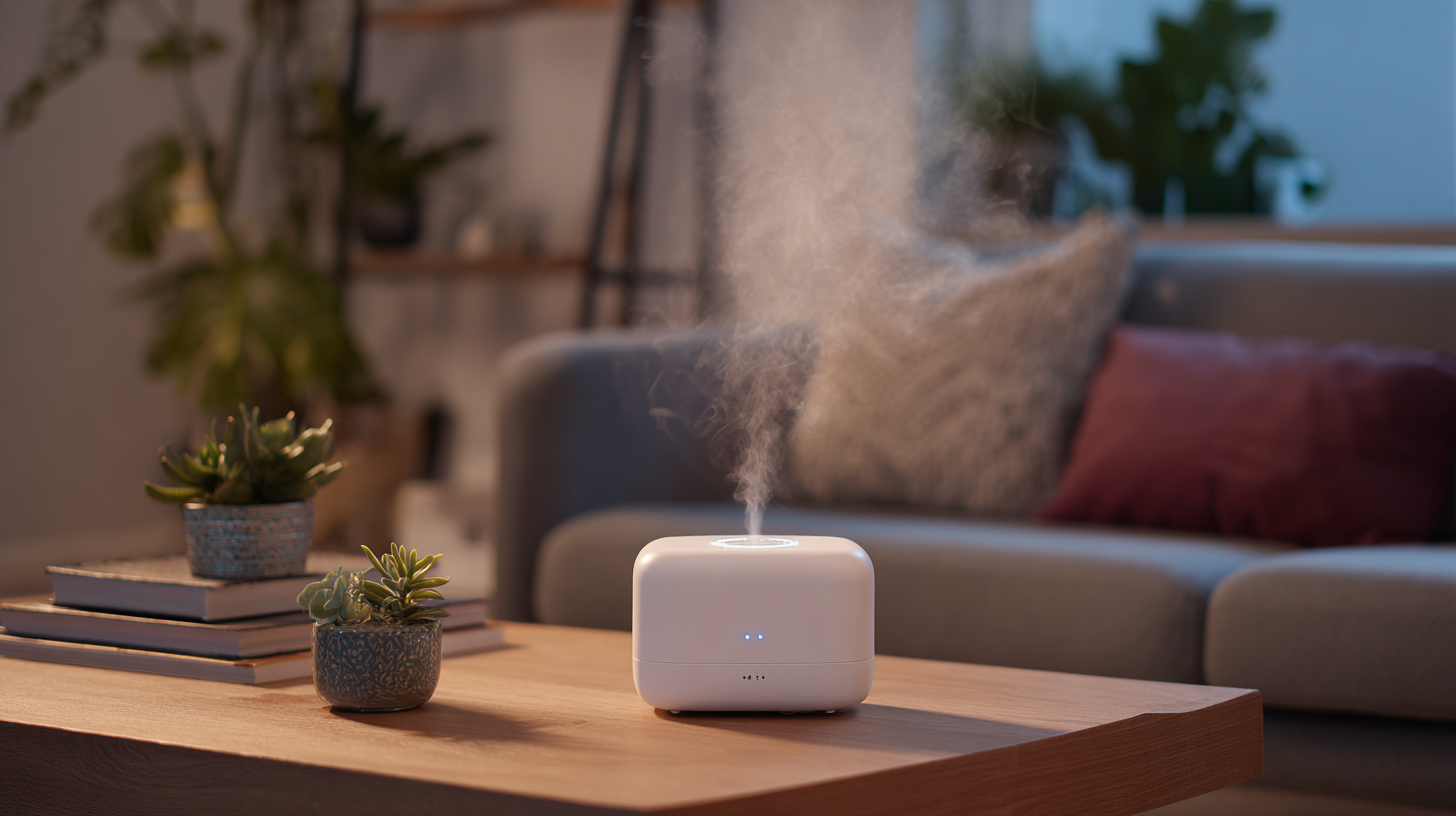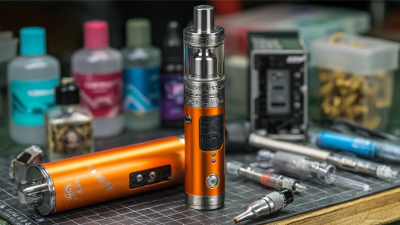
In recent years, the proliferation of vaping has become a significant concern for households, particularly regarding indoor air quality and safety. A comprehensive report by the National Institute on Drug Abuse states that about 30% of high school students in the United States reported using e-cigarettes in 2021, highlighting the urgent need for effective monitoring solutions. A Vape Detector emerges as a crucial tool for enhancing safety and maintaining a healthy living environment.

By detecting the presence of vape smoke, these devices can alert homeowners to potential risks, facilitating timely interventions and promoting cleaner air. Additionally, research from the American Lung Association underscores that the harmful emissions from vaping can contribute to respiratory issues and overall air pollution within enclosed spaces. Adopting a Vape Detector not only mitigates potential health hazards but also fosters awareness and proactive management of indoor air quality, making it an essential addition to any modern home.
Vape detectors are innovative devices designed to identify the presence of vapor from e-cigarettes and other vaping products in indoor environments. These detectors operate similarly to traditional smoke detectors but are specifically calibrated to recognize the distinct chemicals and particulates contained in vape smoke. By employing advanced sensors and analysis algorithms, they can provide real-time alerts when vaping is detected, making them essential for maintaining a safe and healthy living space.
The importance of vape detectors lies in their ability to promote air quality and prevent health risks associated with vaping. Unlike traditional smoking, which has been widely regulated, vaping can often go unnoticed. The harmful substances found in vape aerosols, such as nicotine and various toxins, can pose serious health threats, particularly to children and non-smokers. By installing vape detectors, homeowners can ensure safer environments, encouraging awareness and proactive measures to mitigate potential hazards associated with vaping in their homes.
As indoor air quality becomes a growing concern in homes, the importance of vape detectors cannot be overstated. These devices serve not only to identify the presence of vaping substances, but they also play a critical role in monitoring harmful pollutants and ensuring a healthier living environment. By detecting harmful chemicals often released during vaping, homeowners can take proactive steps to mitigate exposure and improve air quality.

In addition to their primary function of detecting vaping activity, vape detectors can also indicate other indoor air quality issues. Many modern devices are equipped with sensors that track various air quality parameters—such as humidity, particulate matter, and volatile organic compounds (VOCs). This multifaceted approach enables homeowners to gain valuable insights into their indoor air environment, facilitating timely interventions to combat potential health risks. By understanding and addressing these air quality challenges, individuals can foster a safer and more comfortable home atmosphere.
When considering the installation of a vape detector in your home, the placement is paramount for optimal performance and effectiveness. According to a report from the Journal of Environmental Health, indoor air quality can be compromised by vape aerosols, which contain harmful chemicals such as nicotine and ultrafine particulate matter. Therefore, placing detectors in high-traffic areas, such as near bedrooms or living rooms, ensures they can promptly identify any vaping activity, thereby enhancing the safety of your living space.
Furthermore, it’s crucial to install vape detectors in proximity to areas where vaping is likely to occur, such as near home entertainment spaces or in rooms used by teenagers. A study by the American Journal of Public Health notes that adolescent vaping has increased by 78% over recent years, making this demographic particularly at risk. Detectors should be mounted at least 10 feet away from any vents or windows to avoid interference from outside air, ensuring more accurate readings. By strategically placing vape detectors, you can play a proactive role in maintaining healthy indoor air quality and safeguarding your family against the potential dangers of vaping.
To ensure the longevity and effectiveness of your vape detector, regular maintenance is essential. Start by positioning the device in an optimal location—away from air vents and high humidity areas—to minimize false alarms and ensure accurate readings.
Cleaning the detector periodically by dusting it with a soft cloth will prevent buildup that may affect its sensors.
Additionally, it’s important to test the device monthly. This can be done by activating the test feature, if available, or creating a small amount of vapor in its vicinity to check for responsiveness. Always adhere to manufacturer guidelines regarding battery replacement; most detectors require new batteries at least annually to function reliably. By implementing these best practices, your vape detector will remain a crucial tool for enhancing safety and air quality in your home.
As vaping becomes increasingly prevalent in various environments, the need for vape detection systems has never been more critical. Schools have reported a surge in vaping incidents, leading to the adoption of advanced detection technology aimed at safeguarding the health and well-being of students. According to a recent industry report, vaping among adolescents has escalated by over 30% in the last three years, prompting nearly 65% of K-12 institutions to invest in vape detection measures. This proactive approach not only addresses immediate health concerns but also fosters a safer educational environment.

Beyond detecting vape emissions, these systems contribute significantly to improving overall air quality and safety within homes and schools alike. Modern vape detectors can utilize AI-driven technology to identify specific vaping devices and instantaneously alert authorities, creating an instantaneous response framework. This functionality mirrors advancements in other security technologies, where sensors and smart alerts are redefining how we manage safety. The integration of such devices ensures that indoor air quality is monitored, mitigating the risk of long-term health effects associated with exposure to harmful substances. Thus, adopting vape detection technology is a vital step in promoting a holistic approach to safety and health, highlighting its multifaceted benefits beyond mere detection.






